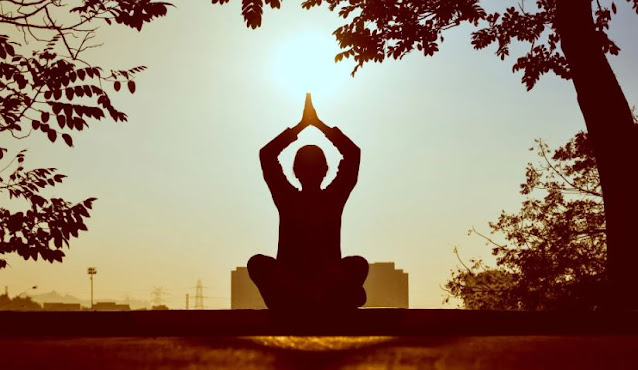As we know, yoga is enjoying a huge renaissance around the world - we know about Bikram's Hot Yoga, Lotus Pose, Normal Body Shows and Oh the Yoga Clothes for Our Pets, Yoga Mats , Even where to buy yoga gear! However, the history of yoga is rich and long and deserves some mention. So without further ado, we get closer to the beginning.
History of Yoga
Between 200BC and 300AD an Indian philosopher known as Patanjali gave yoga sutras to the world - a series of aphrodisiacs in which the practice of the eight limbs of classical yoga was prescribed. Although we know very little about the sage himself, the great work of Patanjali is considered to be the cornerstone of the knowledge of yoga practice, from asana practice to the deep inner journey of meditation and self realization. This work is established in four chapters, which are known as Samadhi Paad, Sadhana Padas, Vibhuti Padas and Kaivalya Padas. Yoga means union, sutra is the Sanskrit word for sutra, and pada word for book. These 1949 short phrases remain the most important work on the philosophy of yoga. From the commentary and analysis of yogis, sages, translators and philosophers, we have accumulated the knowledge of yoga at the time of the waves as it is practiced today - a combination of asana, meditation and body / soul care that has proved timeless. Benefits to all those who engage in this practice.
Hatha yoga
This style is familiar to most of us. Hatha yoga is also known as force yoga; The name hattha comes from a combination of the two Sanskrit words ha (sun) and tha (moon). The Western practice of hatha yoga focuses mostly on asana practice, designed to keep the body flexible and calm the mind in preparation for meditation. This form of yoga is also helpful in harmonizing between our dual points (masculine/feminine, hot/cold, desire/surrender) and brings us closer to the intense practice of yoga.
Bhakti Yoga
Bhakti yoga is the yoga of devotion and chanting. Prediction of Hatha Yoga, Bhakti Yoga is approx. 4000 years old it is one of the oldest forms of yoga in the world! North Americans usually do yoga as an exercise, while the Indian culture practices asanas to calm the mind before meditation and worship. Kirtan is the practice of singing the name of God in all its divine aspects; Translated from Sanskrit it means 'I surrender to the Lord'. Traditionally, kirtan is performed in a call and response style. The kirtan leader sings a line or verse of mantra or prayer, and the kirtan group reacts as accurately as possible. Kirtan is a dialogue between a community, call leader, kirtan group and the energy of the divine. In the eight-limb system of classical yoga, kirtan is considered pratyahara (turning the mind inward) and is a bridge between our inner and outer selves. Bhakti yoga is the divine melody and rhythm of the human soul, which is expressed in chanting and song.
Karma yoga
Karma yoga is selfless service to others. This yoga asks that yogis perform their tasks in this world of devotion and offerings to God, without considering personal gain. If you do community work, volunteer work, or do very well for no reason at all, then you are doing the work of Karma Yoga. Gandhi's years of selfless service to South Africa and India are well-known examples of karma yoga.
Dream yoga
Swapna yoga is about listening attentively to what your dreams are telling you. This knowledge is used to improve your awakened life, helping you to pay more attention to your daily realities, dreams or sharing.
Knowledge yoga
Jnana yoga is the study of the philosophy of yoga; The word wisdom is the Sanskrit word for knowledge. The practice of this yoga includes deep meditation practice, self-study, true self and the parlokik self. Yogis are challenged to investigate the real and the illusions. To do this the yogi must use his mind to separate the real from the unreal and thus seek and liberate the true self. Jnana yoga uses meditation, introspection and contemplation techniques to gain knowledge and knowledge.
Mantra yoga
It is mainly the sum of sound. The word mantra comes from the Sanskrit word to think 'and ant instrument'. Unlike bhakti yoga, mantra is expressed as sound, which is the sum of song and chanting; For example when you are chanting 'Om' you are combining Mantra Yoga and Bhakti Yoga. Mantras have been chanted for thousands of years to direct the mind into meditation and to create states of consciousness or to seek divine guidance.
Raj Yoga
Raj is the Sanskrit word for king and Raj Yoga is known as Shahi Yoga because it brings out the king/queen in all of us; The great inner self that is so often accepted in our everyday life. Raj Yoga Provides an opportunity to focus on the quality of our daily thoughts and deeds, to notice that the workings of the mind are often hidden or disregarded. Most closely with the Yoga Sutras of Patanjali, it is most commonly expressed in the eight limbs of classical yoga.

Comments
Post a Comment